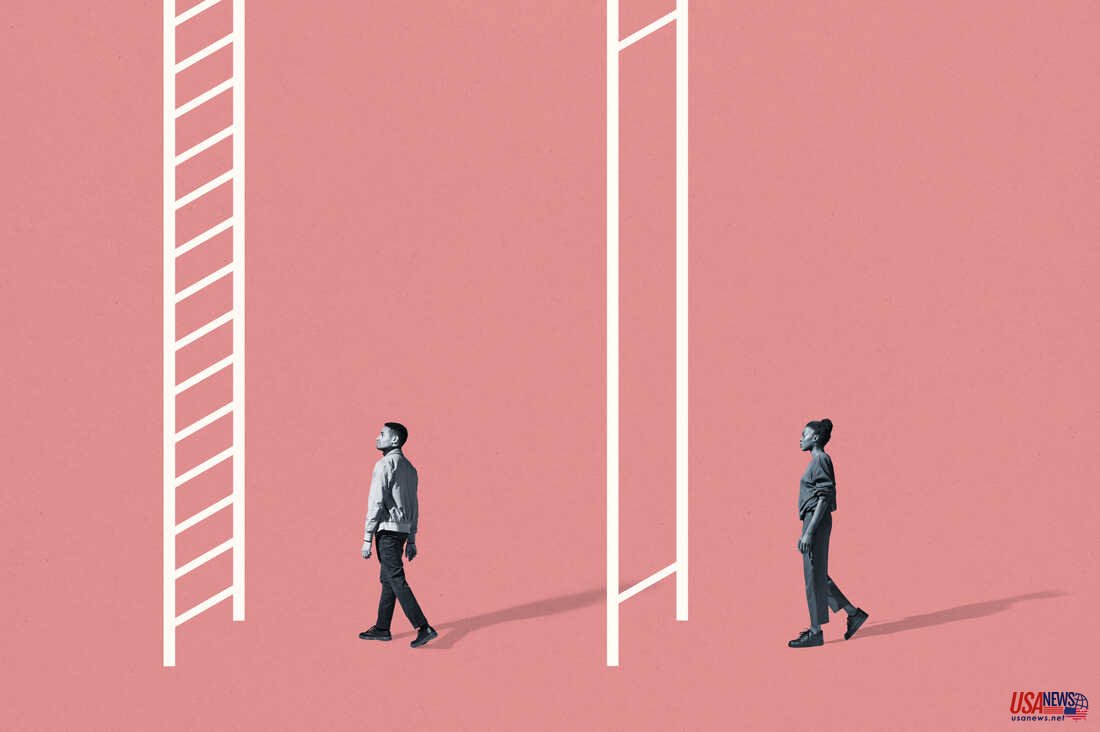It has been nearly 160 years since Union general William T. Sherman led almost 60,000 soldiers on his March to the Sea, a scorched earth campaign through Georgia that was designed to bring the American Civil War to an earlier end. Sherman met shortly thereafter with a group black ministers in Savannah to discuss his future. These community leaders shared their new freedom with Sherman, as they were able to tell Sherman the details of what their people wanted. After all, land was the most important form wealth and the key to a better life.
On January 16, 1865 Sherman issued Special Field Order No. 15 confiscated landowners belonging to the Confederacy along the coast from Charleston, South Carolina down to St. John's River, Florida. This order was approved by President Abraham Lincoln and redistributed the land in 40-acre parcels to newly freed slaves. Sherman later ordered that the Union Army loan these landowners mules so they could harvest their land. That's how we got our well-known expression: "40 acres and an mule."
However, just a few months after the approval of Special Field Order No. Lincoln was assassinated at the age of 15. Andrew Johnson was his successor and a turncoat. He reversed the pro-Black policies of Lincoln Administration and rescinded the policy of distributing 400,000 acres Confederate land to slaves. Johnson gave the land back to the original owners, the white Southern planters. America's slaves who were freed from centuries of oppression and exploitation were not compensated.
W.E.B. wrote that "Thus, efforts to provide the freedman land and tools ended and he was left to move for himself amid new, dangerous social environments." 1901 Du Bois "No such curious or reckless experiment in emancipation was made in modern times."
Economists Ellora Dienoncourt, Chi Hyun Kim and Moritz Kuhn begin their new study on the racial inequality with this quote by Du Bois. This is the first time that a long-term dataset has been created on racial wealth disparities. It covers the period from 2020 to 1860, which was the eve before the Civil War. It is entitled "Wealth between Two Nations: The U.S. Racial Wealth Gap: 1860-2020
The new study is the latest in a growing number of studies that show that despite the apparent progress made since civil rights, when it comes down to the most fundamental economic issues, income, wealth and mobility, there is still a significant amount of progress to end racial inequality. This study reveals the simple math behind why America will not see true racial equality soon if it doesn't take radical measures.
Ellora Derenoncourt, a young economist, has exploded into the spotlight of econ nerdom through a series eye-opening papers on racial inequality. In 2019, she received her PhD in economics at Harvard. Last year, Princeton University appointed her as an assistant professor. She is the director and founder of Princeton's Program For Research On Inequality.
Derenoncourt was kind enough for us to go through her new study via Zoom. We asked Derenoncourt about the long-term pattern of racial wealth inequalities she and her colleagues had discovered. She turned to her whiteboard and made a drawing. The graph's vertical axis is the degree to which racial wealth has been reduced (the proportion of wealth from whites to blacks). The horizontal axis represents years.
Derenoncourt described the data pattern as a hockey-stick shape (with the stick of the hockey stick on its handle) and showed that wealth inequalities between black and white people was very high in 1860, and rapidly declined through the 19th and 20th centuries. It has remained relatively flat since 1950. This means that there has been almost no progress in closing this wealth gap. The study actually shows that the wealth gap has been growing since the 1980s.
Let's go back to 1860. This was in the days before Emancipation when approximately 4 million of America's 4.4 million Black citizens were enslaved. The vast majority of Black Americans were deprived of their ability to accumulate wealth and pass it onto their children by slavery. They were themselves a form wealth aEUR" of other people's wealth. The ratio of wealth between black and white was 56 to 1. Another way to put it is that for every dollar a white person has, a Black person only has about 2 cents.
Although President Johnson ended the 40-acres and a mule order, Black Americans made great progress in reducing the wealth gap during the first year after Emancipation. In 1870, five years after the passage of the 13th Amendment to abolish slavery, the wealth gap between blacks and whites had fallen to 23 to 1. This was less than half the amount it was before.
What is the reason why the gap in racial wealth fell so fast? One reason is the impact of the Civil War and the abolition on white slaveowners. The wealth earned by enslaved persons was a significant form of wealth, accounting for 15% of total wealth in white America in the year 1860. Their liberation resulted in a decrease in the average wealth of white America and a shrinking gap in racial wealth.
Derenoncourt and her associates calculate that white slaveowners' losses account for only 25% of the decline in racial wealth. They find that most of the drop in racial wealth was due to newly freed individuals being able earn, save, invest and amass wealth.
While the story of oppressed people fighting for their freedom is inspiring, it is important to remember that simple math was a major factor in the sharp decline in racial wealth in these early years. Even small gains in wealth can seem huge when one group has virtually zero wealth. Wealth inequality drops sharply when the denominator (the lowest part of the fraction) in the white-to black ratio changes from nothing to something.
Economists believe that despite the failures of Reconstruction, Jim Crow apartheid and many other horrendous injustices committed against Black Americans during this time, the 50 years following Emancipation saw the most significant progress in closing the racial wealth disparity in American history. In 1920, the gap between white and black wealth was a mere 10-to-1. This means that for every dollar that a White American has, a Black American has about ten cents.
It might have seemed like Black Americans were fast on their way to closing the wealth gap from white Americans 100 years ago. The gap has been widening since 1980, when progress has slowed.
The economists found that there has been very little progress to close the average racial wealth disparity since 1950, despite all the progress Black Americans made in business, politics, and culture during the mid-to late 20th and early 21st century. In 1950, the ratio white-to-Black wealth was 7 to 1. It's now 6 to 1. The average Black American only has 17 cents for every dollar that the average white American has. (For those who are curious about the median, it is even worse: For every dollar that a white household has, a black household has only 10 cents.
This is unbelievable! Aren't Black Americans making a lot of progress since civil rights? Why haven't they made big gains in wealth?
Derenoncourt and her coworkers conduct a thought experiment to help understand what's happening. To simulate what the racial wealth gap might look like if Black Americans had lived in an equal world after Emancipation, and were able to accumulate wealth at the same rate as white Americans, they create a dream simulation. The simulation starts at the extreme wealth inequality of 1860 and shows how the racial wealth gap might look if Black Americans were able to save the same amount as white Americans. This scenario would have required the removal of segregation, discrimination and concentrated poverty in the labor market, scars from slavery, exclusions and limitations from social welfare programs, obstacles to purchasing homes in nice neighborhoods, hurdles in obtaining bank accounts, loans, stock portfolios, etc.
Economists believe that the white-to black wealth ratio in a more egalitarian world would be 3-1, rather than 6-1. This is a huge difference. It is half the wealth inequality. The average Black American would still have only a third the wealth of the average white American.
Derenoncourt claims that despite all the benefits granted to Black people in this ideal scenario, the graph of the evolution racial wealth inequality remains the same "hockey stick" shape they see with real-world data. This is because wealth inequality drops sharply after Emancipation and progress towards closing the gap slows down around the middle of the 20th century. This is due to the math involved in trying to reduce the wealth ratio.
Derenoncourt states that if you start with a denominator that is very small (which is how we started the whole experiment in Emancipation), then the initial increases to that denominator will have the greatest effects on the ratio." "The rate of convergence will get smaller over time."
It takes time to accumulate wealth. Wealth is more valuable than having it. It can snowball. It is extremely difficult for groups that are far behind to catch up.
Derenoncourt states that wealth is an intrinsically historical object as it passes from one generation to another. It accumulates over time. This is the type of mathematical law we have locked in, given our starting point.
Derenoncourt and her coworkers found that there was actually some progress in wealth during the civil rights movement of the 1960s and 70s. Black Americans were able accumulate wealth at a slightly faster rate than the economists' ideal simulation. This was largely due to the fact that Black Americans experienced significant income gains back then.
The racial wealth gap began to widen in the 1980s. According to economists, convergence would have continued. This is due to the fact that Black Americans have stopped making progress in catching up with white Americans' incomes. They're stuck with lower incomes and have been unable to save or invest.
These economists also believe that Black Americans invest their savings differently to white Americans. Her colleagues and Derenoncourt note that Black households have around two-thirds their wealth in housing and are less likely to own stocks. They write that stocks have appreciated five times faster than home values since 1950.
This wealth-accumulating gap has been exacerbated by the fact that income-generating wealth is more important than earning income through work. Black Americans are unable to take advantage of the booms in stock, housing, and other asset markets because they lack wealth.
Derenoncourt believes that their dream simulation reveals something about the hopes of closing the racial wealth disparity. Politicians often emphasize education, job training, financial literacy, or schemes to get Black Americans into the stock market or homes. This would be a good thing. Even if we could boost Black savings rates and allow average Black Americans to make higher-return investments, they would still be far behind in building wealth.
Derenoncourt states that the best way to go is to move from a wealth gap that is increasing to one that is continuing to converge at an extremely slow pace. The wealth gap at the Civil War was so large. You can start at that point and then go to 1950 for the flat portion of the convergence path. You're going to slowly convergence aEUR even though everyone has the same chance to accumulate wealth. This isn't the case.
Derenoncourt states that if America truly wanted to close the racial wealth gaps sooner than expected, then the only thing that could do it is some kind of large wealth redistribution. It would be something similar to, but larger than General Sherman's order that Black Americans receive 40 acres and a mule.
Although it is still controversial politically, there has been an increase in intellectual interest in recent years to offer reparations to Black Americans. William Darity Jr., and A. Kristin Mullen estimated that a program of reparations to close the racial wealth gaps would cost between ten and twelve trillion dollars. It is a staggering amount. It can be understood as a type of debt, which America has failed to pay for over a century.













